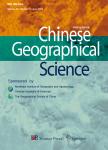Delineation of an Urban Community Life Circle Based on a Machine-Learning Estimation of Spatiotemporal Behavioral Demand
Delineation of an Urban Community Life Circle Based on a Machine-Learning Estimation of Spatiotemporal Behavioral Demand作者机构:College of Urban and Environmental SciencesPeking UniversityBeijing 100871China
出 版 物:《Chinese Geographical Science》 (中国地理科学(英文版))
年 卷 期:2021年第31卷第1期
页 面:27-40页
核心收录:
学科分类:0303[法学-社会学] 08[工学] 0708[理学-地球物理学] 0705[理学-地理学] 0813[工学-建筑学] 0704[理学-天文学] 0833[工学-城乡规划学] 083303[工学-住房与社区建设规划]
基 金:Under the auspices of the National Natural Science Foundation of China(No.41571144)。
主 题:community life circle spatiotemporal behavioral demand demand estimation model decision tree ensemble learning
摘 要:Delineating life circles is an essential prerequisite for urban community life circle planning. Recent studies combined the environmental contexts with residents’ global positioning system(GPS) data to delineate the life circles. This method, however, is constrained by GPS data, and it can only be applied in the GPS surveyed communities. To address this limitation, this study developed a generalizable delineation method without the constraint of behavioral data. According to previous research, the community life circle consists of the walking-accessible range and internal structure. The core task to develop the generalizable method was to estimate the spatiotemporal behavioral demand for each plot of land to acquire the internal structure of the life circle, as the range can be delineated primarily based on environmental data. Therefore, behavioral demand estimation models were established through logistic regression and machine learning techniques, including decision trees and ensemble learning. The model with the lowest error rate was chosen as the final estimation model for each type of land. Finally, we used a community without GPS data as an example to demonstrate the effectiveness of the estimation models and delineation method. This article extends the existing literature by introducing spatiotemporal behavioral demand estimation models, which learn the relationships between environmental contexts, population composition and the existing delineated results based on GPS data to delineate the internal structure of the community life circle without employing behavioral data. Furthermore, the proposed method and delineation results also contributes to facilities adjustments and location selections in life circle planning, people-oriented transformation in urban planning, and activity space estimation of the population in evaluating and improving the urban policies.



